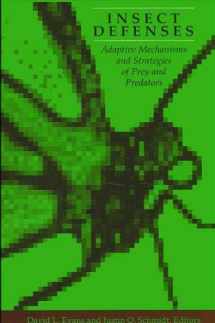
Insect Defenses: Adaptive Mechanisms and Strategies of Prey and Predators (Animal Behavior Series)
Book details
Summary
Description
This work takes a fresh, modern approach to investigate and explain the predator and prey relationships of insects and spiders, the major terrestrial fauna on earth. Devoted to broad and in-depth analysis of arthropod defenses against predators, the book’s approach is both experimentally and theoretically based with major emphasis on evolution, predator strategies and tactics, and prey defensive adaptations and behaviors.
The authors explain such topics as cryptic and aposematic coloration, the conflict between sexual and survival needs, web spider prey choice and evolution of prey counter defenses, predator-prey interactions and the origins of intelligence, bird predatory tactics, and caterpillar defense strategies. Also examined is the use of timing for fitness and survival, evolutionary gamesmanship in the predatory bat-moth relationship, colony defense by aper wasps, startle as a defense by moths, aggregation as a defense, chemicals as defenses, plant chemicals as defenses, and venoms as defenses. The authors illustrate each topic with numerous specific well-documented examples presented in a clear, readable style.


We would LOVE it if you could help us and other readers by reviewing the book
Book review



